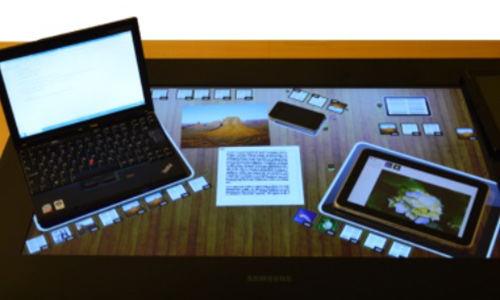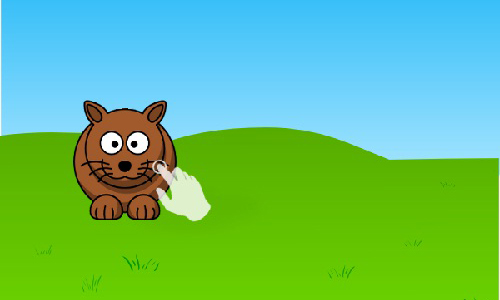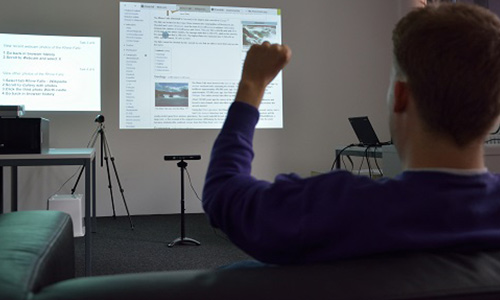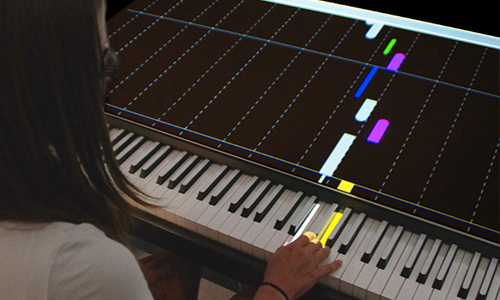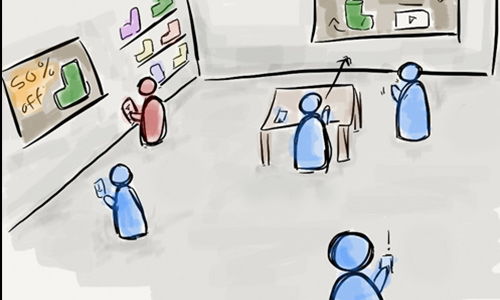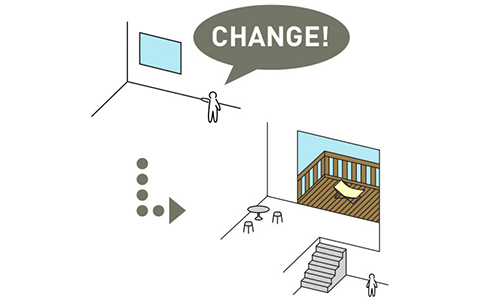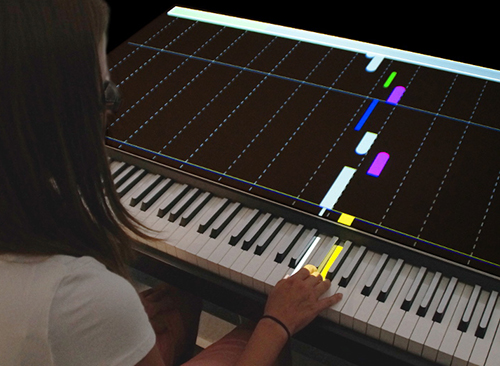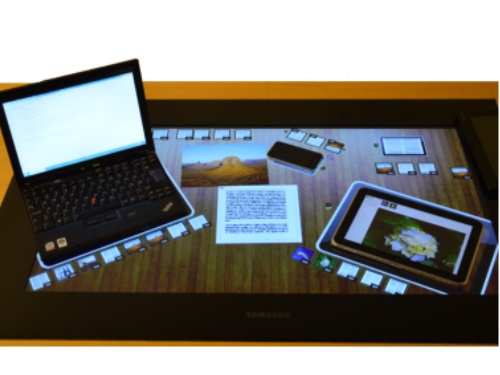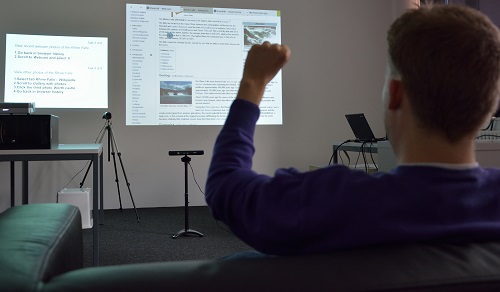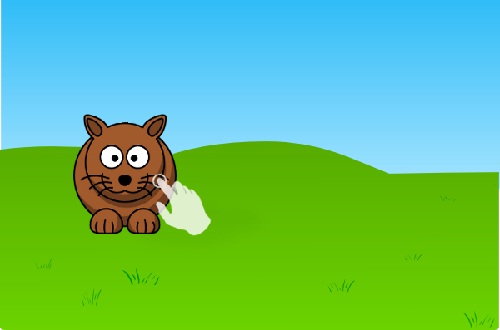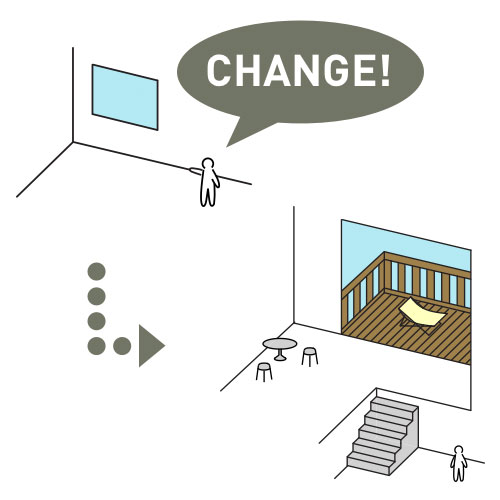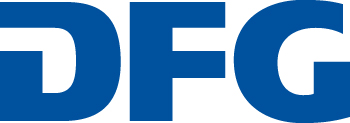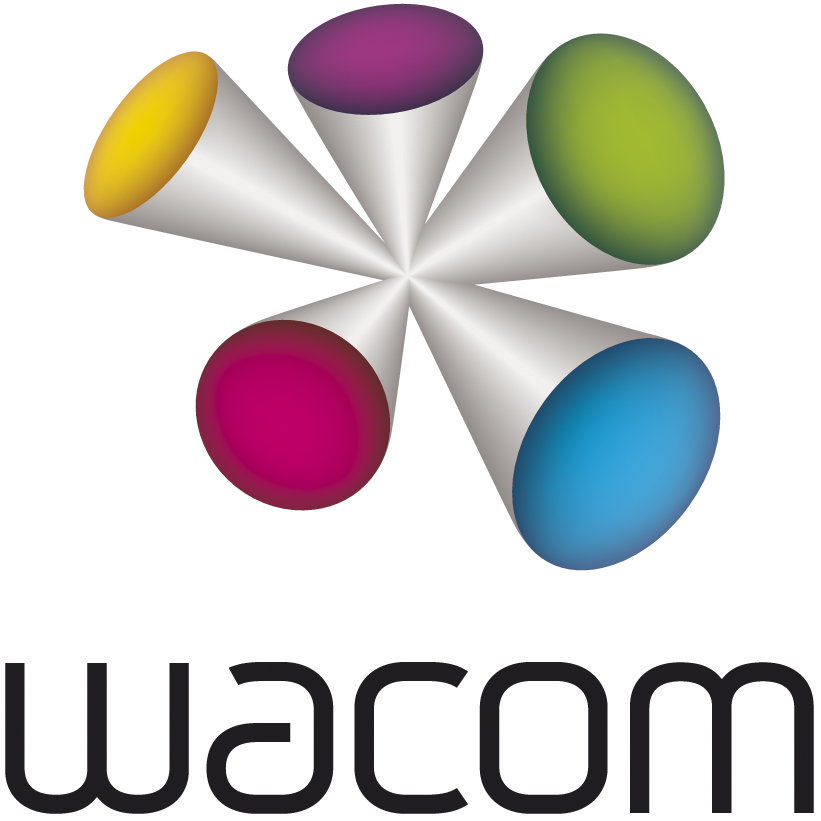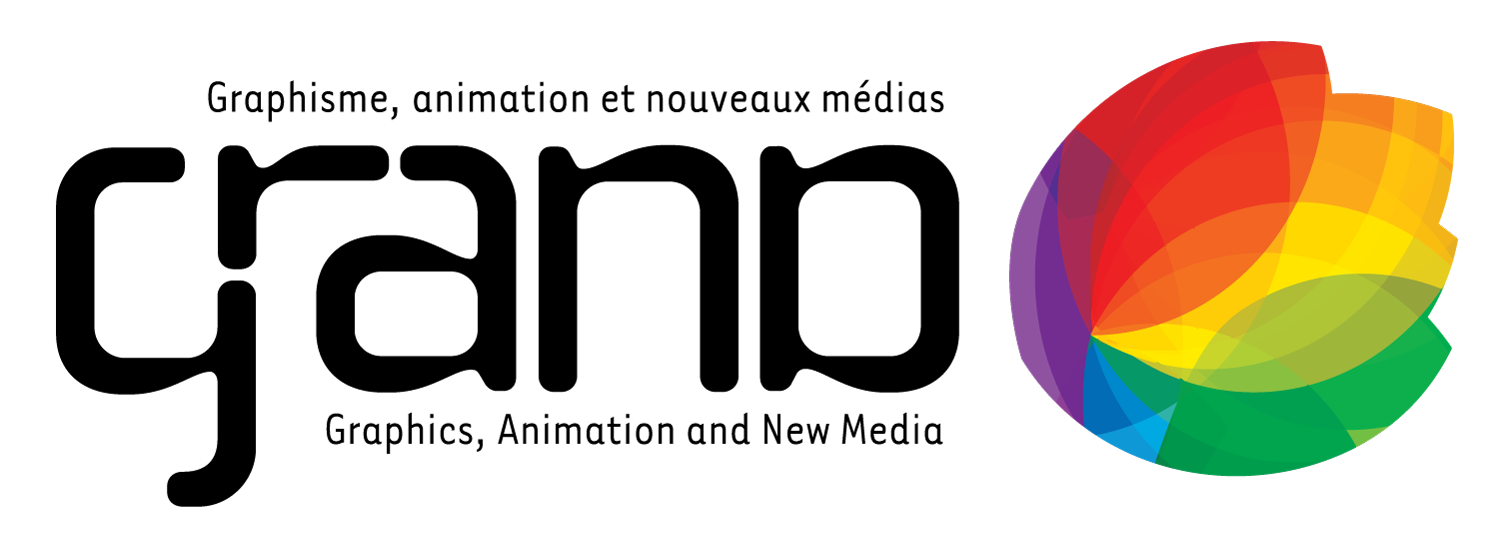 Best Paper Award
Best Paper Award
BullsEye: High-Precision Fiducial Tracking for Table-based Tangible Interaction 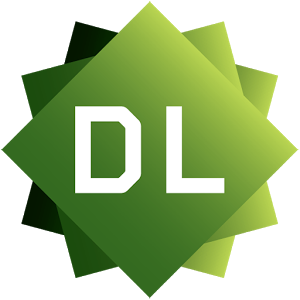
Clemens N Klokmose, Janus B Kristensen, Rolf Bagge, Kim Halskov
BullsEye improves the precision of optical fiducial tracking on tangible tabletops to sub-pixel accuracy down to a tenth of a pixel. Techniques include a fiducial design for GPU based tracking, calibration of light that allows for computation on a greyscale image, and an automated technique for optical distortion compensation.
 Best Student Paper Award
Best Student Paper Award
P.I.A.N.O.: Faster Piano Learning with Interactive Projection 
Katja Rogers, Amrei Röhlig, Matthias Weing, Jan Gugenheimer, Bastian Könings, Melina Klepsch, Florian Schaub, Enrico Rukzio, Tina Seufert, Michael Weber
We propose P.I.A.N.O., a piano learning system with interactive projection that facilitates a fast learning process. Note information in form of an enhanced piano roll notation is directly projected onto the instrument and allows mapping of notes to piano keys without prior sight-reading skills. We report the results of two user studies, which show that P.I.A.N.O. supports faster learning.
 Honorable Mentions
Honorable Mentions
ActivitySpace: Managing Device Ecologies in an Activity-Centric Configuration Space 
Steven Houben, Paolo Tell, Jakob E Bardram
To mitigate multi-device interaction problems (such as lack of control, intelligibility and context), ActivitySpace provides an activity-centric configuration space that enables users to integrate and work across several devices by using the space between the devices. We report on a study with 9 participants that shows that ActivitySpace helps users to easily manage devices and their allocated resources while exposing a number of usage patterns.
Web on the Wall Reloaded: Implementation, Replication and Refinement of User-Defined Interaction Sets 
Michael Nebeling, Alexander Huber, David Ott, Moira Norrie
This paper replicates Morris's Web on the Wall guessability study first using Wizard of Oz for multimodal interaction elicitation around Kinect. To obtain reproducible and implementable user-defined interaction sets, the paper argues for extending the methodology to include a draft of the system for mixed-initiative elicitation with real system dialogue.
Improving Pre-Kindergarten Touch Performance (Note) 
Vicente Nacher, Alejandro Catala, Javier Jaen, Elena Navarro, Pascual Gonzalez
Pre-kindergarten children have problems with double tap and long pressed gestures. We empirically test specific strategies to deal with these issues. The study shows that the implementation of these design guidelines has a positive effect on success rates, becoming feasible their inclusion in future touch based applications for pre-kindergarten children.
Towards Habitable Bits: Digitizing the Built Environment 
Yuichiro Takeuchi
This paper identifies an emerging trend of technical research aimed at the "digitization of architectural space", and describes the range of contributions the HCI community can make in this domain. Opens up a new research field with relevance not only to HCI but also to architecture and urban design.
 Best Demonstration Audience Award
Best Demonstration Audience Award
Demonstrating HuddleLamp: Spatially-Aware Mobile Displays for Ad-hoc Around-the-Table Collaboration 
Roman Rädle, Hans-Christian Jetter, Nicolai Marquardt, Harald Reiterer, Yvonne Rogers
We demonstrate HuddleLamp, a desk lamp with an integrated RGB-D camera that tracks movements and positions of mobile displays on a table. HuddleLamp's hybrid sensing combines RGB and depth input for tracking movements of multiple mobile screens with sub-centimetre precision by exploiting their optical characteristics in RGB and IR range.
